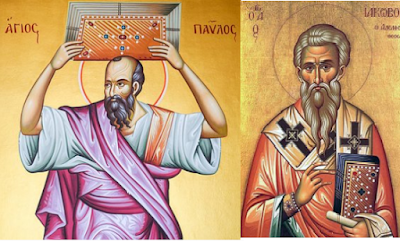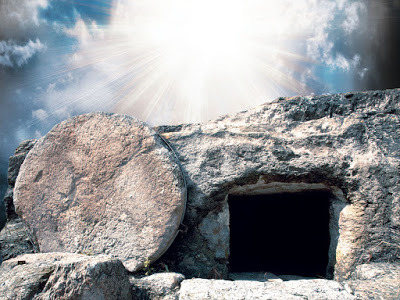Evan Minton's Blog, page 34
May 9, 2018
5 Biblical Texts That Calvinists Can't Wiggle Out Of

When Calvinists say that Jesus only died for the elect (i.e, those God chose to irresistibly save before the foundations of the world) instead of for every human being, Arminians will frequently counter that teaching with Bible passages like John 3:16 that says "For God so loved the world that He gave His one and only son, so that whosoever believes in Him will not perish, but have eternal life." (emphasis mine) or 1 Timothy 2:4-6 which says "[God] wants all people to be saved and to com...
Published on May 09, 2018 10:46
May 4, 2018
What Would Aliens Mean For The Christian Worldview?

Anyone who knows me knows that I LOVE science fiction. When I was a child, I fantasized about time traveling and space traveling, meeting my future or past self, or meeting with beings on a far away planet. There isn't much science fiction I don't enjoy. If I'm not a fan of it, it's most likely because I haven't tried it yet. I like Star Wars, Planet Of The Apes, Doctor Who (I'm a BIG Whovian), and The Men In Black movies. But as I watch Yoda ride on young Luke's back and he's training him to...
Published on May 04, 2018 05:00
April 2, 2018
The Evidence For Jesus' Resurrection - Part 10: Conclusion

If you've taken the time to read through this entire series, I commend you. The resurrection of Jesus is the most important event in human history. If it occurred, the Christian worldview is true. If it did not occur, then we need to search for worldview truth elsewhere. However, we saw throughout the last 9 blog posts that the historical evidence for Jesus' resurrection is shockingly strong.
You know, there have been times when I myself gave refuting the resurrection a shot. But I could never...
Published on April 02, 2018 05:00
April 1, 2018
The Evidence For Jesus' Resurrection - Part 9: Probabilities and Plagarism

This is part 9 in a blog post series on the historical evidence for Jesus' resurrection. In parts 3, 4, 5, and 6, we've seen powerful historical evidence that (1) Jesus died by Roman crucifixion, that (2) His tomb was found empty the following Sunday morning, that (3) the twelve disciples believed they saw Jesus alive after His death, that (4) a church persecutor named Paul converted to Christianity on the basis of what he perceived to be an appearance of the risen Jesus, and (5) a skeptic na...
Published on April 01, 2018 05:42
March 31, 2018
The Evidence For Jesus' Resurrection - Part 8: Some Unanswered Questions

This is part 8 in a blog post series on the historical evidence for Jesus' resurrection. In parts 3, 4, 5, and 6 of this series, we've seen powerful historical evidence that (1) Jesus died by Roman crucifixion, that (2) His tomb was found empty the following Sunday morning, that (3) the twelve disciples believed they saw Jesus alive after His death, that (4) a church persecutor named Paul converted to Christianity on the basis of what he perceived to be an appearance of the risen Jesus, and (...
Published on March 31, 2018 05:00
March 30, 2018
The Evidence For Jesus' Resurrection - Part 7: Reasoning To The Resurrection
 This is part 6 in a blog post series (and eventually, free Kindle book) on the evidence for Jesus' resurrection. In parts 3, 4, 5, and 6 we saw that powerful historical evidence exists for the following 5 facts
This is part 6 in a blog post series (and eventually, free Kindle book) on the evidence for Jesus' resurrection. In parts 3, 4, 5, and 6 we saw that powerful historical evidence exists for the following 5 facts1: Jesus died by Roman crucifixion.
2: His tomb was found empty by a group of His women followers the following Sunday Morning.
3: The 12 Disciples believed they saw Jesus alive shortly after His death.
4: A church persecutor named Paul converted to Christianity on the basis of what he...
Published on March 30, 2018 05:00
March 29, 2018
The Evidence For Jesus' Resurrection - Part 6: Facts (4) and (5) The Postmortem Appearances To Paul and James

This is part 6 in a blog post series on the evidence for the historicity of Jesus' resurrection. The Minimal Facts Case for the resurrection of Jesus is what I've been defending the past 5 articles, and in part 2, I explained what a minimal facts approach is. Part of a minimal facts approach is a two-step process: (1) establishing 5 historical facts through the use of "the criteria of authenticity" and (2) discerning what the best explanation is for those 5 facts. In part 3, we saw that...
Published on March 29, 2018 05:27
March 28, 2018
The Evidence For Jesus' Resurrection - Part 5: Fact (3) - The Postmortem Appearances To The Disciples

This is part 5 in a series of blog posts detailing the wealth of historical evidence for the resurrection of Jesus. In the last 2 parts of this blog post series, we saw that the evidence that Jesus died by Roman crucifixion is overwhelming to the point that even atheist historians say that it's an indisputable fact. Then, we saw 10 pieces of historical evidence pointing to the reality of Jesus' empty tomb which was found by a group of His women followers the Sunday following His execution.
How...
Published on March 28, 2018 05:37
March 27, 2018
The Evidence For Jesus' Resurrection -- Part 4: Fact (2) The Empty Tomb

We saw in the previous blog post that the historical evidence for Jesus' death was overwhelming. Even several non-Christian scholars affirm it, and even say that it's the one fact about Jesus that is indisputable. However, what happened to Jesus after He died? The New Testament says that He was placed in a tomb that was found vacant 3 days later by a group of Jesus' women followers. This is the second minimal fact in our case for Jesus' resurrection. But what evidence is there that Jesus...
Published on March 27, 2018 05:00
March 26, 2018
The Evidence For Jesus' Resurrection -- Part 3: Fact (1) Jesus Died By Crucifixion

In the previous blog post, I explained what the minimal facts approach was, and how it employed standard historical criterion to the New Testament text rather than it being a "Thus sayeth The Lord" approach. The New Testament is used, but only as an ancient set of documents, not as scripture. Additionally, the minimal facts approach employs a two-step process (1) Determining the facts to be explained and (2) Determining the best explanation of those facts. At this stage of the game, we a...
Published on March 26, 2018 05:00



